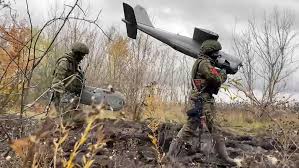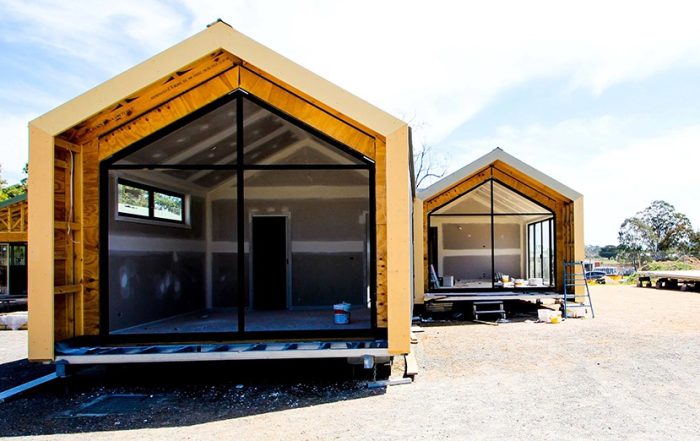The Defence of Australia
Trump wants Australia to increase our Defence spending to somewhere over 3% of GDP, whereas now it is at 2%. It is planned to rise to 2.3% by the end of the decade. Albanese has said we will make our own decisions, so we await Trump’s wrath.
There are some issues around our defence and how much we should spend. This article will explore a couple of them.
Firstly, think about how a few billion dollars would be spent. A big chunk would go towards purchasing guns, planes, rockets, tanks and ships. Most of this will be to US companies that make these instruments of war. Does the support of the US arms industry have anything to do with Trump’s “suggestion”? I leave it to you to decide. It is not just the original purchase that benefits America. Equipment needs to be maintained, replaced and upgraded over the life of the device, be it a rocket or a submarine.

U.S. Air Force F-35A Lightning II Joint Strike Fighters
Imagine if we agreed and decided to buy everything from Europe. What do we expect Trump’s reaction to be? He is unlikely to be pleased and will attack Australia for deserting their oldest ally. I can imagine him opening an attack on some other aspects of our mutual trade.
Secondly, our armed forces are struggling to recruit enough soldiers, sailors, engineers, flight crew and in particular, submarine crew with the numbers we have today. Under the current plan, we have to increase personnel by 30% by 2040. How will we fill the ranks of an even bigger force? There is even talk today to offer roles to Pacific Islanders and give them immigration opportunities after a set period. How far do we want to expand our recruitment area? I hear North Korea have plenty of troops. Maybe we can borrow a few.
Thirdly, there is the issue of the purpose of a defence force. For many decades, Australia has focused on having a mobile force that can respond anywhere globally. Over the last few years, it has become more about defending the mainland of Australia. That requires a different approach where the ability to transport people halfway around the world becomes less important than keeping shipping lanes open.
The biggest threat, of course, is China. How exactly do we ever expect a country of 28 million to resist a country of 1.411 billion? We are outnumbered 50 to 1. China builds more ships each year than we have in our navy. If China decided to invade, we would look like Singapore in World War II. It would be all over in a matter of days.
Some might say, “What about the vast distances involved?” My answer would be Why bother invading all of Australia. Who cares about invading Coober Pede? Invade the major cities and a few coastal towns. Once control is established, take over food production areas and forget the rest. Alternatively, invade WA and take over the mineral production.
Fourthly, there is the issue of alliances. We have always had strong alliances with America, but can we still rely on a world where Trump changes direction constantly? Remember, Trump said the Ukraine war would stop in 24 hours? It is still raging. He seems to have lost interest in Gaza and lets Israel continue to massacre civilians. The answer to the question about whether he can be relied upon is “Probably not”.
Should we be forming other alliances? Indonesia and the Philippines may be options, and we have some military agreements. Perhaps we should strengthen those alliances. Similarly, India is a massive force headed by an unpredictable Modi. We do cooperate with the Indian Navy and run joint exercises, but I cannot see them coming to our assistance if we were attacked. Britain is an ally, but it is a long way away. Should we pin our hopes on New Zealand?
Fifthly, what can we learn from Ukraine? It has been almost an old-school war with trenches, artillery, and bombs. The biggest revelation has been the use of drones both for surveillance and attack — cheap weapons, when we would have expected Star Wars-like weaponry. Interestingly, much is home-built. Where are the industries in Australia that make these weapons? I expect nowhere.
 So why is the military not encouraging small factories to innovate and produce weapons like drones and small rockets? We have one success with cardboard drones produced in Australia and used in Ukraine. If we rely on artillery from the US, we will run out of bullets very quickly. If we cannot switch production lines to produce drones, rockets, ammunition and bombs, we will not last long.
So why is the military not encouraging small factories to innovate and produce weapons like drones and small rockets? We have one success with cardboard drones produced in Australia and used in Ukraine. If we rely on artillery from the US, we will run out of bullets very quickly. If we cannot switch production lines to produce drones, rockets, ammunition and bombs, we will not last long.
Sixth, the biggest thing to cripple Australia in a war would be fuel. We have few reserves and no production facilities. Within a few weeks, we would have ships tied to the dock with no diesel. Aircraft would sit in hangars with no jet fuel. Our famous Bushmasters would sit in sheds waiting for a tanker to arrive.
Finally, there is the issue of our AUKUS nuclear submarines due to arrive sometime in a decade or two. They would be a key part of the defence if we had them today. As an ex-Navy Captain told me, “They can sit on the bottom of the South China Sea for months on end, and nobody knows they are there. They can monitor communication, launch missiles, land troops, and sink ships. Their biggest advantage is the uncertainty it creates in the enemy.”
All well and good, but what will the situation be in the 2040s and 50s? By then, they may no longer be invisible to satellites. They may be game for undersea drones. They may be ineffective. By the time they are launched, they may be obsolete — a dinosaur like the cavalry in WW I.
Australia’s Defence Force is more tokenistic than effective. An annoyance to an invader rather than a deterrent. We can double spending, but still not reach a force that would be able to stop a serious Chinese invasion attempt without having support from America. Maybe it is not worth throwing more money at a problem we cannot solve.
Perhaps what we have now is good enough to provide training and experience for potential future conflicts. Switzerland only spend 0.7% of its GDP on Defence, so maybe it should be our model. Of course, they do have compulsory conscription and two-thirds of men undertake military training, but that is a whole other topic.






